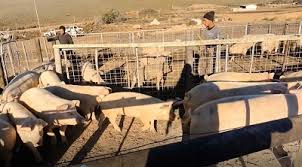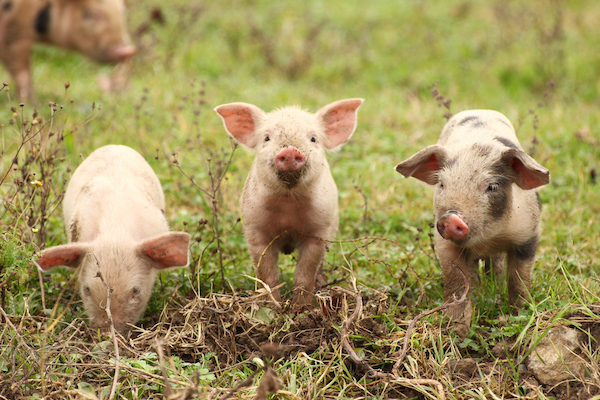From Piglets to Profits: A Step-by-Step Guide to Buying and Selling Pigs
Here’s a step-by-step guide on buying piglets and raising them to sell as fully grown pigs:
Step 1: Research and Planning Start by researching the pig farming industry and understanding the local market demand for pigs. Determine the purpose of your pig farming business, whether it’s for meat production or breeding. Consider factors such as land availability, budget, regulations, and infrastructure required for pig farming.
Step 2: Determine the Number and Type of Piglets Decide on the number of piglets you want to buy based on your available resources and market demand. Choose the appropriate breed based on factors such as growth rate, disease resistance, and market preferences.
Step 3: Source Piglets Find reliable sources to purchase healthy piglets. Look for reputable pig breeders or livestock auctions in your area. Ensure that the piglets are disease-free and have been properly vaccinated. It’s essential to choose piglets with good growth potential.
Step 4: Prepare Housing and Equipment Before bringing the piglets home, set up a suitable housing facility. The housing should provide enough space for the piglets to move around comfortably and protect them from extreme weather conditions. Install feeding and watering equipment, as well as proper ventilation systems.

A Step-by-Step Guide to Buying and Selling Pigs
Step 5: Provide Proper Nutrition Consult a veterinarian or livestock nutritionist to formulate a balanced diet for your piglets. Feed them with high-quality pig feed that meets their nutritional requirements. Gradually introduce solid feed alongside their mother’s milk to ensure a smooth transition.
Step 6: Implement Health Care Measures Maintain a regular health care program for your piglets. Schedule vaccinations, deworming, and regular health check-ups with a veterinarian. Practice strict biosecurity measures to prevent the spread of diseases and ensure a healthy environment for the pigs.
Step 7: Monitor Growth and Development Monitor the growth and development of your piglets closely. Keep track of their weight gain and adjust their diet accordingly. Provide them with clean water at all times and ensure they have access to adequate exercise to promote healthy growth.
Step 8: Market Your Pigs Once the piglets reach the desired weight or age for sale, start marketing your pigs. Advertise locally, contact potential buyers such as wholesalers, retailers, or individuals interested in purchasing live pigs. Participate in livestock fairs or events to showcase your pigs and attract customers.
Step 9: Arrange Transportation When you have interested buyers, make necessary arrangements for transportation. Coordinate with the buyers to determine the pickup or delivery location. Ensure the pigs are transported in appropriate vehicles that meet the regulations and provide a safe and comfortable journey.
Step 10: Complete Sale and Documentation Finalize the sale by completing the necessary documentation and paperwork. Ensure that you comply with local regulations and obtain any required permits or licenses for selling live animals. Provide buyers with the necessary documentation, such as health certificates or breed certificates.
Remember that pig farming requires continuous learning and adapting to changing market conditions. Stay updated with industry trends, seek advice from experienced pig farmers, and be prepared to adjust your strategies accordingly.
Best pig breeds in South Africa
- Large White (Yorkshire): The Large White breed is known for its excellent meat quality, fast growth rate, and high feed conversion efficiency. They are well-adapted to different climates and are widely used for commercial meat production.
- Landrace: Landrace pigs are known for their strong mothering instincts, high fertility, and good milk production. They have a long, deep body and are often used in crossbreeding programs to improve carcass quality and reproductive traits.
- Duroc: Duroc pigs are renowned for their exceptional meat quality, marbling, and tenderness. They have a reddish-brown color, good growth rates, and are known for their feed efficiency. Durocs are often used in crossbreeding to enhance meat quality in commercial herds.
- Pietrain: Pietrain pigs are characterized by their muscular build and high meat yield. They have a distinctive black and white color pattern and are known for their excellent meat quality, leanness, and good feed conversion rates. Pietrains are commonly used in crossbreeding programs to improve carcass traits.
- Hampshire: Hampshire pigs are recognized for their meat quality, feed efficiency, and good growth rates. They have a black body with a white belt around the shoulder area. Hampshire crosses are popular for commercial pork production due to their desirable carcass characteristics.
- Wessex Saddleback: Wessex Saddleback pigs are known for their hardiness, adaptability, and docile temperament. They have a black body with a white belt around the forequarters. Wessex Saddlebacks are versatile and can be used for both meat production and outdoor/free-range systems.

A Step-by-Step Guide to Buying and Selling Pigs
Also see:
YouTube Channel: Farming South Africa
Facebook Page: Farming Life
Back To Home Page: Farming South Africa
A Step-by-Step Guide to Buying and Selling Pigs
Tags: selling pigs, guide to buying pigs, guide to sell pigs, buying and selling pigs, A Step-by-Step Guide to Buying and Selling Pigs, best way to sell pigs, best way to buy pigs, farming South Africa, pigs, guide for pigs selling and buying

